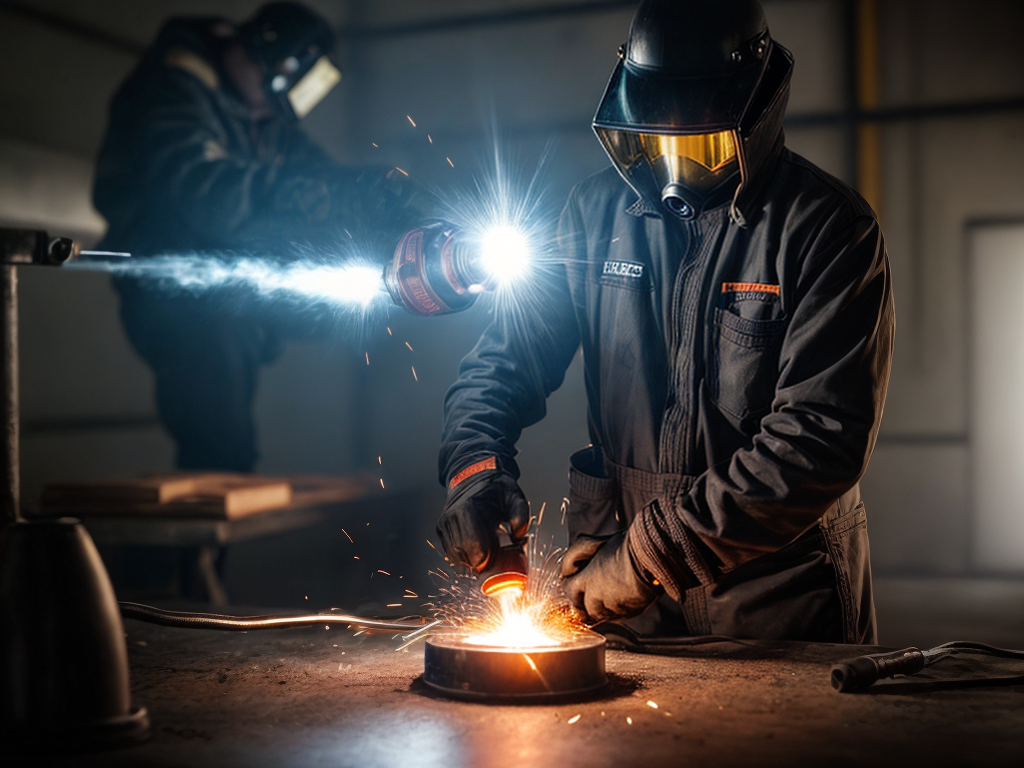
I’ve always believed that “practice makes perfect,” and this couldn’t be truer when it comes to welding. As someone who desires mastery in this craft, it’s important to know the do’s and don’ts of your first weld. In this guide, I’ll share with you the essential tips and tricks to help you get started on the right foot. We’ll cover everything from safety precautions and necessary tools to proper preparation and cleaning. I’ll also dive into the dos and don’ts of welding technique, highlighting common mistakes that you should avoid. So, grab your gear and let’s dive into the world of welding!
Safety Precautions to Take
What safety precautions should I take for my first weld? As someone who wants to master the art of welding, it is crucial to prioritize safety gear and be aware of potential welding hazards. First and foremost, wearing the appropriate safety gear is non-negotiable. This includes a welding helmet, safety glasses, welding gloves, and flame-resistant clothing. These items will protect you from sparks, UV radiation, and potential burns. Additionally, it is important to ensure proper ventilation in your workspace to prevent inhalation of harmful fumes and gases. Furthermore, inspecting your welding equipment regularly and keeping it in good working condition is essential to avoid any accidents. Lastly, always remember to have a fire extinguisher nearby and to familiarize yourself with its proper usage. By following these safety precautions, you can approach your first weld with confidence and protect yourself from potential harm.
Essential Tools and Equipment
I recommend having the following essential tools and equipment for your first weld. First and foremost, prioritize welding safety by investing in a good-quality welding helmet, welding gloves, and a welding jacket or apron to protect yourself from sparks and heat. Additionally, a welding mask with a clear lens will help you see your work clearly. You will also need welding supplies such as welding electrodes, welding rods, and welding wire specific to the type of metal you are working with. A welding machine or welder is essential, and it’s crucial to choose one that suits your needs and skill level. Finally, don’t forget to have a fire extinguisher nearby in case of emergencies. With the right tools and equipment, you’ll be well-prepared for your first welding project.
Proper Preparation and Cleaning
To ensure a successful first weld, proper preparation and cleaning are essential steps in the process. Before starting any welding project, it is crucial to perform pre weld inspections to identify any defects or imperfections in the materials. This will help ensure the quality and strength of the finished weld. Additionally, proper metal surface preparation is vital for a strong and durable weld. Cleaning the metal surface removes any contaminants, such as dirt, rust, or paint, that can negatively affect the weld’s integrity. It is recommended to use a wire brush or grinder to remove these impurities and create a clean and smooth surface for welding. Taking the time to properly prepare and clean the materials will greatly improve the overall quality and longevity of your welds.
| Pre Weld Inspections | Metal Surface Preparation |
|---|---|
| Check for defects | Clean the metal surface |
| Identify imperfections | Remove contaminants |
| Ensure quality | Use a wire brush or grinder |
| Verify strength | Create a clean surface |
| for welding |
Dos and Don’ts of Welding Technique
Continuing with proper preparation and cleaning, it is important to focus on the dos and don’ts of welding technique for a successful first weld. When it comes to welding positions, it is crucial to choose the right one based on the joint and welding process. Common positions include flat, horizontal, vertical, and overhead. It is essential to understand the characteristics and limitations of different welding materials. Some metals require specific techniques, such as preheating or post-weld heat treatment. It is also important to avoid excessive heat input, as it can lead to distortion or even failure of the weld. Maintaining a steady hand and controlling the travel speed are key to achieving a consistent and high-quality weld. Lastly, always remember to follow proper safety precautions to ensure a successful and safe welding experience.
Common Mistakes to Avoid
One mistake to steer clear of is neglecting proper safety precautions when welding for the first time. Safety should always be the top priority when working with welding equipment. Some common mistakes to avoid when starting out include not wearing appropriate protective gear such as welding gloves, goggles, and a welding helmet. Another mistake is not properly preparing the workpiece before welding, which can lead to weak or faulty welds. It is also important to avoid using the wrong welding technique for the type of metal being welded. Troubleshooting techniques can help identify and correct these mistakes. By understanding and avoiding these common mistakes, beginners can ensure safe and successful welding projects.
| Common Mistakes to Avoid | Troubleshooting Techniques |
|---|---|
| Neglecting safety precautions | Always wear proper protective gear and follow safety guidelines. |
| Improper workpiece preparation | Clean and prepare the workpiece according to the welding specifications. |
| Using the wrong welding technique | Research and learn the correct welding technique for the specific metal being welded. |
